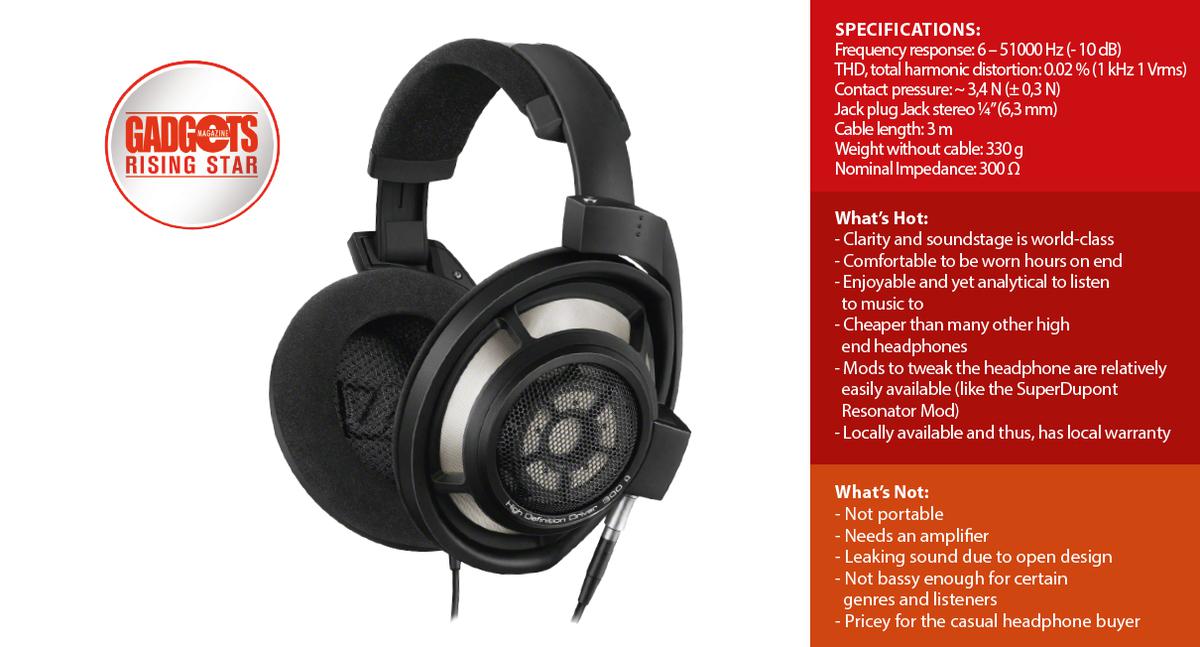Let me preface this by saying I haven’t been an audiophile for that long. However, thanks to the wonderful headphones community here in the
Philippines, especially the older members and the really generous and enthusiastic collectors, I was exposed to a whole new world of music listening. With that said, let us now discuss the Sennheiser HD800.
Sennheiser is a brand that’s well known not just in consumer audio but also in the pro audio world as well. When it comes to headphones, they have a solid reputation. From their entry level offerings, the audiophile staple HD600/650 to the legendary Orpheus, Sennheiser has everthing from quite cheap to ridiculously expensive.
So when they released the first HD800 a few years ago, last 2009 to be a bit more precise, quite a few people waited with baited breath for the new (non-Orpheus) flagship headphones. And Sennheiser didn’t disappoint. What came out did not just look new in terms of design, but also set a benchmark in terms of sound characteristics and quality.
Design: 4/5
There’s not a lot to be discussed here. Sennheiser departed from the traditional headphone design making the HD800 recognizable even from a distance away with its futuristic look. Granted, it’s not for everyone and surely doesn’t do subtle. It’s pretty much love it or hate it for certain people. Me? I’m a fan of the design.
Hardware: 4.5/5
The Sennheiser HD800 is, many years after its release, still a benchmark for soundstage and imaging. This headphones create an aural environment way beyond the usual headphones that are upfront and that the instruments and vocalists are mixed together. To be more precise, the HD800 creates a soundscape that allows listeners to pinpoint each and every instrument be it in a rock concert or even an orchestra, assuming the tracks are recorded and mastered well. A fault perhaps of this headphone is that it exposes the flaws of the tracks that are poorly recorded and mastered, even intentionally done so in certain genres of music. Speaking of genres, the HD800’s nature as a spacious and revealing headphone makes it somewhat unsuited for some genres that rely on a more upfront presentation. For example, certain rock and EDM songs sound a tad unnatural with this headphones due to the spaciousness and lack of bass bloat.
On a side note, the amazing imaging and soundstage makes this an amazing FPS gaming headphone.
User Experience: 3/5
Now, at 330 grams without the cable, the HD800 is light on the head and quite comfy. The downside of this is that there were compromises made that may have affected its durability. Basically, this is not the sort of headphones you’d wear while out and about as the construction is admittedly fragile. Handling it with care is a must! And oh, take note that this is an open headphone. People around you could hear what you’re listening to which means using this in a quiet public place such as a library is a no-no.
Value: 4/5
While this is no Stax 009, the Sennheiser Orpheus, this still is an expensive headphone.Furthermore, with a 300 ohm impedance, a headphone amplifier is a must. This adds a lot to the expense as quite a few amplifiers cost more than the HD800 itself. Another thing to consider, is that there are a lot of headphones out there recently released such as the successor HD800s, Focal Utopia, Audeze LCD-4, amongst others. However, interestingly enough, the HD800 still holds its own compared to the said headphones at a price that we dare say cheap even, for a relative scale.
For someone looking for headphones that offer clarity and imaging without diving too deep into the wallet-breaking realm that is high end headphones, the venerable HD800 is a tempting offer.
For more casual headphone users that want something on the go or something to use publicly, look elsewhere.
Bottomline:
With great sound quality comes great wallet pain.
Also published in GADGETS MAGAZINE March 2018 Issue.
Reviewed by Arvee Corpuz
